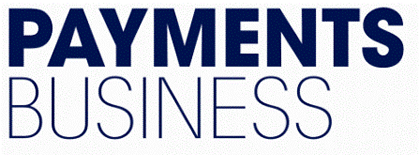 By Cyrielle Chiron
By Cyrielle Chiron
In fall 2018 I had the pleasure of speaking about global payments trends across Canada and the U.S., sharing insights from RFi Group’s very latest global studies. While every country is unique and has different trends impacting their payments ecosystem, being able to adapt to a changing landscape is clearly a common theme and North America: Canada and the U.S., is no exception.
Declining cash, growing P2P use
At a global level, while cash remains king, credit and debit card usage has overtaken traditional payments across most markets. In Canada and the U.S. paper (mainly cheques) are still widely used. However, RFi Group data shows that consumers expect to rely less on cash going forward and increase their usage of cards. This is especially true among Millennials, where we see lower number in terms of cash usage; they are the least likely to use cash in a typical month and are the most likely to be able to envisage a cashless society.
We are also seeing a shift in the way consumers send money between each other. Our research shows that globally, cash, online banking and third-party apps are each being used by roughly a third of customers. While this is also true for Canada and the U.S., the two countries show different behaviours.
In Canada, the use of online banking for peer-to-peer (P2P) payments is high and has grown significantly in the last 12 months. This is directly correlated with the growth of Interac e-transfer usage, which has been in part driven by the addition of new features over the past year. In the U.S. we see a proliferation of third-party apps like Venmo, which are becoming popular with particularly Millennials.
Limited FinTech provider demand
At events people ask me about the use of FinTech and digital-only providers. What are consumers doing and what are they thinking?
I tell them that the use of FinTech and digital-only providers is more prevalent in the payments space than in any other aspect of banking. At a global level we are talking about 64 per cent of consumers being comfortable using digital-only providers for their payments needs. As expected, it is higher among Millennials, but it is still quite high across all other age groups.
The usage of these providers is on the rise, but we see clear differences across all of the countries we are surveying. Asian countries are leading the pack and we also see a lot of activity in the U.S.. But Canada sees a little bit less activity. It is not that Canadians are not interested in these players. Rather, it is that at least at this stage, our data shows they are quite satisfied with the way Interac and banks have been addressing their payments needs.
Crossing mobile wallet barriers
At a global level, the proportion of consumers who have made an in-person payments via mobile (contactless mobile payment) has grown from last year, rising from 20 per cent to 27 per cent between the first half of 2017 and the same period in 2018. Our data shows that in countries where contactless cards usage is already well established—like Canada—the use of mobile wallets is usually lower.
However, we see a clear appetite for new payments methods, especially among Millennials, so there is a real opportunity for mobile wallets. So, what are the main barriers to their use?
Regardless of whether we are surveying consumers or merchants, the story is the same. Our studies find that security, reliability and prevalence are the key barriers to both usage and acceptance in Canada and also the U.S.. Education and reassurance are key to overcoming negative perceptions around security and reliability, but as an industry we need to educate the market about prevalence.

When we speak to consumers about the different barriers of usage, a key theme that emerges is the perception that their merchants don’t accept mobile wallets in general or their particular wallets.
Even Millennials, who you would assume to be more knowledgeable about these new payments methods, think third-party wallets like ApplePay or GooglePay are more widely accepted than bank wallets (41 per cent for third-party wallets versus 28 per cent for bank wallets).
In truth both bank and third-party wallets are equally accepted by merchants as it is the same technology, except for Chinese wallets such as WeChat Pay. Perception of low merchant acceptance is also one of the main barriers to frequent usage.
On the other hand, when we ask merchants about the key reasons why they don’t accept mobile payments, we see a clear lack of understanding both in terms of mobile wallets in general as well as the features offered through their point of sale (POS) terminals. Most believe they must update their terminals and/ or pay extra fees to accept these transactions.
In Canada, many merchants are not aware that their current terminals, which already accept contactless cards, can also accept mobile payments. Making sure the communication goes from the account managers to the front-line staff is crucial to accelerating the acceptance of mobile wallets.
However, perhaps more important than improving the understanding of these wallets is demonstrating their prevalence to merchants. Namely showing them that this is how consumers want to be paying: and that they risk losing customers if they don’t.
One of the most common reasons that merchants don’t accept mobile payments, like via mobile wallets, is a perceived lack of demand from their customers. However, one in five Canadians have indicated they have either abandoned a purchase or avoided a merchant altogether because they weren’t able to pay the way they wanted to pay! There is a huge missing opportunity to promote acceptance of mobile payments among Canadian merchants, in this changing landscape, for the benefit of both businesses and consumers.
Cyrielle Chiron is managing director, North and Latin America, RFi Group (www.rfigroup.com).




